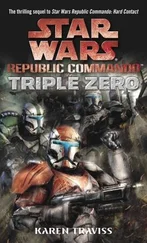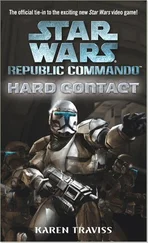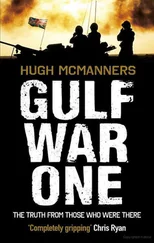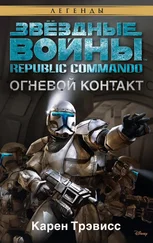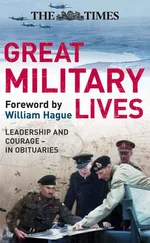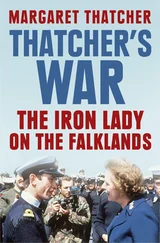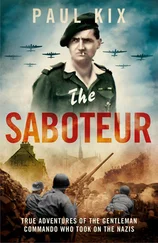Hugh McManners - Falklands Commando
Здесь есть возможность читать онлайн «Hugh McManners - Falklands Commando» весь текст электронной книги совершенно бесплатно (целиком полную версию без сокращений). В некоторых случаях можно слушать аудио, скачать через торрент в формате fb2 и присутствует краткое содержание. Город: London, Год выпуска: 2014, ISBN: 2014, Издательство: Nightstrike Publishing, Жанр: nonf_military, Биографии и Мемуары, на английском языке. Описание произведения, (предисловие) а так же отзывы посетителей доступны на портале библиотеки ЛибКат.
- Название:Falklands Commando
- Автор:
- Издательство:Nightstrike Publishing
- Жанр:
- Год:2014
- Город:London
- ISBN:978-0-992-81540-0
- Рейтинг книги:4 / 5. Голосов: 1
-
Избранное:Добавить в избранное
- Отзывы:
-
Ваша оценка:
- 80
- 1
- 2
- 3
- 4
- 5
Falklands Commando: краткое содержание, описание и аннотация
Предлагаем к чтению аннотацию, описание, краткое содержание или предисловие (зависит от того, что написал сам автор книги «Falklands Commando»). Если вы не нашли необходимую информацию о книге — напишите в комментариях, мы постараемся отыскать её.
Falklands Commando — читать онлайн бесплатно полную книгу (весь текст) целиком
Ниже представлен текст книги, разбитый по страницам. Система сохранения места последней прочитанной страницы, позволяет с удобством читать онлайн бесплатно книгу «Falklands Commando», без необходимости каждый раз заново искать на чём Вы остановились. Поставьте закладку, и сможете в любой момент перейти на страницу, на которой закончили чтение.
Интервал:
Закладка:
As well as waiting anxiously for the ship to be ready, Nick was having trouble with communications, but by walking around on the top of the hillock, we were able to get through. After the argument about firing the mortars, our troubles with the radio and the delay, there was muttering in the ranks… muted complaining, and worried doubting about the wisdom of waiting so long in the freezing cold. Nick and I were standing about 15 metres away from the rest of the patrol when the ship’s radio operator finally reported that they were ready, I ordered her to fire twin salvoes (one shell from each barrel).
We could see the faint flash of Antrim ’s guns far out in the Sound as the guns were fired.
I ordered our patrol to lie down. The first salvo can, by the nature of the naval system go anywhere. Then followed a silence, an eerie whistling noise and a second, briefer silence as the shells descended. I’d ordered airburst (which explodes 50 feet above the ground) and as it arrived, night turned into day. The hollow crash of the explosions came seconds later. The gaps in between were filled with gasps and expletives from the patrol, who’d never seen naval guns at work. I felt like Merlin unleashing the forces of darkness.
They were bang on target. Apparently at the other end on the gunship, they were broadcasting our radio transmissions over the tannoy. After the anxiety of our helicopter insertion, their fraught passage to the gunline, and the final unleashing of these first shells of the landings, when our message came back, ‘On target, 20 salvoes fire for effect’, they all cheered.
The forty shells came down two at a time for about one minute. Our patrol remained lying down, while exchanging appreciative expletives. When the bombardment stopped, there was no resumption of the Argentine firing.
We then decided to press on towards the enemy positions under the cover of a sporadic NGS bombardment. This would make our enemy concentrate on his own survival and so be less likely to become aware of our presence. Every minute a shell crashed down.
We tramped along the ridge to the end, with Roger F. and me in front, from where we could observe the northerly slopes of Fanning Head. I peered through the viewer of the TI, found the observation party near the top, then swept the slopes, and was astonished to see two lines of figures moving steadily over the ridgeline down into the valley in front of us. I counted 40, with more coming over, all in our direction. We were outnumbered, so we had to make the most of our position on high ground, along with that other vital military factor – surprise.
We ordered a line to be formed along the ridge with all the machine guns on the flanks, a small fire team behind us to protect from a rear attack, and the mortar set up in the gully behind. We had sixteen GPMGs (General Purpose Machine Guns), one being carried by every second man. These were loaded with tracer ammunition, which burns red in the darkness, so that the streams of fire would be terrifyingly visible to the enemy. Only a battalion, or at the minimum two companies, would be able to deploy as many as sixteen GMPGs.
In my diary I wrote:
The night was very cold and we chilled rapidly whenever we stopped. The heavy work of moving caused perspiration which made us colder still when we stopped again. We got to our ridge position, moving very carefully with snipers out in front. Initially there was no sign, but then silhouetted against the spur of north Fanning Head we could see six or so figures of men digging in. (Afterwards we found that the shelling had caused them to dig in, their not having bothered until the shells arrived.) I opened up [with the NGS] well beyond them [800m] and crept the fire backwards towards them.
Not only did I not want to hit them, but I did not want to hit us !
The bright-red figures on the imager ran around, lay down or just stood still when the shells came down. Then a strange thing was seen – a line of two parallel files of men marched over the spur and lined up on our side, apparently deciding what to do next.
The figures then started to move towards us, away from their gun position and my NGS shells. We decided this was the time to try our loudspeaker. It was very windy, blowing from the enemy towards us. A stream of tracer was aimed using an Armalite fitted with a night-scope, and then one GMPG opened up on the same line, placing a burst of tracer over their heads.
But predictably I suppose, the loudspeaker that had been so carefully devised, packed and carried, failed to work. Rod Bell tried shouting something about ‘Royal Marine desperadoes’, but even if they heard, after the shelling and machine-gun fire it must have seemed like the voice of an angry god.
The main enemy group now split, with men moving in different directions, towards and away from us. The situation was very rapidly getting out of control. The Squadron Sergeant-Major in charge of the rear protection party, stamped angrily around below the ridgeline just below Roger and me, swearing with worry and shouting, “This, gentlemen, is not the way to do business.”
One group of enemy was sitting down as Rod had ordered them to, but there were a number of others trying to sneak off over the spur and back to their gun position. Using tracer rounds from a weapon with a night sight to indicate the target, GPMG bursts were fired at these would-be escapees, initially to cut them off and ‘shepherd’ them back to the main group, but then directly at them – shooting to kill.
Rod Bell’s South American sympathies now broke through, and he became very angry, shouting that he was going down the hill to talk to them, to try to prevent them from being slaughtered. I urged that a section with a radio be sent down to protect him. So in this highly tricky situation, we let our humanitarian instincts get the better of military logic, and split our force in the darkness.
But we were running out of darkness. Dawn was approaching, and we were in a very vulnerable position, overlooked by Fanning Head, which we knew from our thermal sweep in the helo to have enemy on it.
It was not clear what to do. We’d neutralised the ‘Fanning Head Mob’ as this enemy unit later came to be known, and so had achieved our aim. We should now do something about the enemy in front of us.
Further down the hill, Rod was unable to find them so very sensibly came back when ordered.
With very great reluctance we decided that as the Argentinians were not surrendering, we would have to shoot to kill. We were beginning to feel like butchers, but the knowledge of what was to happen later, and the thought of what would certainly have happened if they got back to their mortars, guns and anti-tank guns, tempers my remorse.
My diary noted:
The next problem was the approaching dawn, which would reveal our rather poor position – on a hill being overlooked by Fanning Head. We detected movements on top of the Head and so I shelled it with NGS yet again. We dug shell scrapes (a shallow trench). As it got light we saw enemy trying to get up to the top of the Head and into the bushes at its northern side. We tried to get them to surrender by firing over their heads but in the end we fired at them. They must have thought us terribly bad shots.
Suddenly, shockingly, from off to the right of this action, a long burst of machine-gun tracer fire hit us from the foot of the hill, blasting my shell scrape and ripping the bergen of the man next to me. I forced myself to look up but the enemy had taken cover. Next to me, Wally P who’d been firing up at the Head, wrenched his GPMG round to the right and fired long deafening bursts at a clump of bushes further down the spur. I also put a dozen rounds of rifle fire into this small area. The firing stopped.
Читать дальшеИнтервал:
Закладка:
Похожие книги на «Falklands Commando»
Представляем Вашему вниманию похожие книги на «Falklands Commando» списком для выбора. Мы отобрали схожую по названию и смыслу литературу в надежде предоставить читателям больше вариантов отыскать новые, интересные, ещё непрочитанные произведения.
Обсуждение, отзывы о книге «Falklands Commando» и просто собственные мнения читателей. Оставьте ваши комментарии, напишите, что Вы думаете о произведении, его смысле или главных героях. Укажите что конкретно понравилось, а что нет, и почему Вы так считаете.

